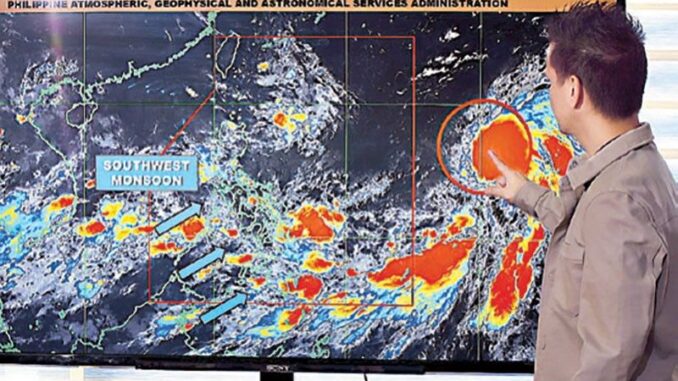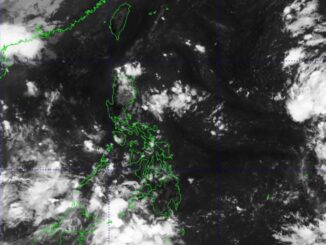
MANILA, Philippines — Severe Tropical Storm Bebinca will intensify into typhoon category as it enters the northeastern boundary of the Philippine area of responsibility (PAR) today, according to the Philippine Atmospheric, Geophysical and Astronomical Services Administration (PAGASA).
Bebinca, which will be named Ferdie once it enters PAR, was monitored 1,975 kilometers east of Central Luzon as of 10 a.m. yesterday.
It is set to intensify into a typhoon and will exit late Friday night or Saturday morning, but will remain far from the Philippine landmass.
Bebinca was packing maximum sustained winds of 95 km/h near the center and gustiness of up to 115 km/h.
Meanwhile, the southwest monsoon is being enhanced by Bebinca and will bring moderate to rough seas over the eastern seaboard of Mindanao, western seaboard of Palawan including the Kalayaan Islands, western seaboard of Visayas, eastern seaboard of Palawan, western seaboard of Mindanao, and the southern and eastern seaboards of Visayas.
The trough of Bebinca will bring scattered rains over Eastern Visayas, Caraga, Catanduanes, Albay, Sorsogon and Masbate.
Isolated rains are also forecast over Cagayan Valley, Aurora, Quezon and the rest of Bicol region.
Metro Manila and the rest of Luzon may see isolated rains due to localized thunderstorms.
World Risk Index
Environment Secretary Maria Antonia Yulo Loyzaga yesterday said that the government is working strategically across departments and local governments amid the latest report naming the Philippines as having the highest World Risk Index (WRI) in the 2024 edition of the World Risk Report.
The Philippines topped the list followed by Indonesia, India, Colombia, Mexico, Myanmar, Mozambique, the Russian Federation, Bangladesh and Pakistan.
The WRI report said the Philippines scored 46.91, higher than its 46.82 and 46.86 scores in the 2022 and 2023 editions, respectively.
“Disaster risk is measured by compounding hazards, exposure and vulnerability. The Philippines is impacted by many natural hazards but under the Marcos administration it is also one of the fastest growing economies in the world with a steady population growth and declining poverty rate. This explains our high exposure and vulnerability,” Loyzaga said.
The Office of Civil Defense (OCD) sees the results of this year’s World Risk Index report as a reminder of how much work needs to be done to improve disaster response and mitigation in the country.
“This year’s World Risk Index Report focuses on the interconnected crisis factors that impact populations, considering various types of risks to determine a country’s overall risk profile,” the OCD said.
“Philippines taking the top spot in the 2024 World Risk Index Report is a clear reminder that we need to keep working together to tackle and address the challenges and issues at hand,” it added.
Countries were assessed on their levels of exposure, vulnerability, susceptibility, lack of coping capacities, and lack of adaptive capacities to crises including extreme natural disasters, conflicts, pandemics and wars.
The WRI is calculated based on exposure and vulnerability with exposure pointing to earthquakes, tsunamis, coastal and riverine floods, cyclones, droughts and sea level rise while vulnerability has three dimensions: susceptibility, coping and adaptation.
“The OCD emphasizes the enormity of this task. In its capacity, it is committed to addressing the numerous factors involved. Through collaboration with various sectors, the OCD will continue to promote more comprehensive and concrete efforts to reduce risks,” the OCD said. – Bella Cariaso, Michael Punongbayan





Be the first to comment